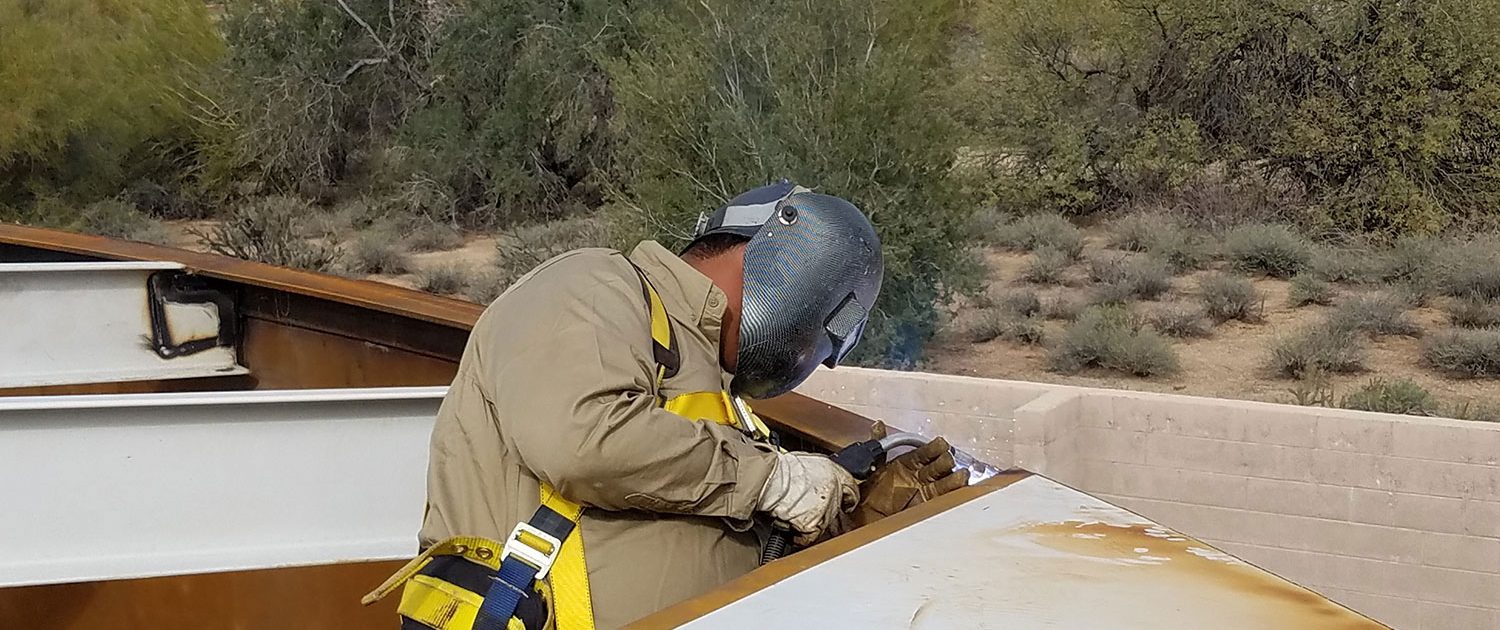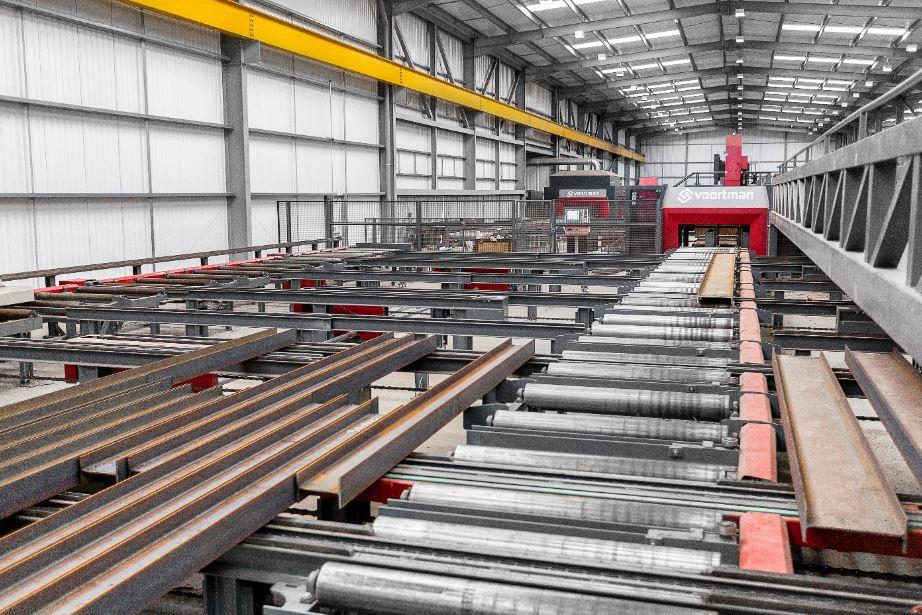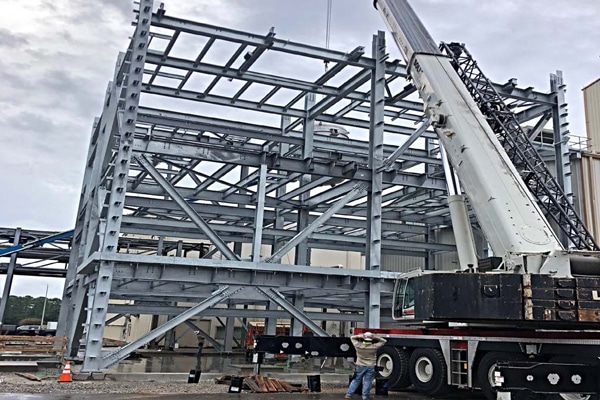Why Alpha Reo Is the Top Selection for Steel Support
Cutting-edge Patterns in Steel Manufacture: Enhancing Sturdiness and Accuracy
In the realm of steel manufacture, the search of longevity and accuracy has actually caused a wave of cutting-edge fads that are improving the industry. From improvements in welding innovations to the integration of robot automation in construction procedures, the landscape of steel production is evolving rapidly. High-strength alloy development, coupled with the utilization of 3D modeling and simulation software application, is pushing the boundaries of what is possible in regards to architectural stability and precision. Moreover, the growing focus on lasting methods in steel manufacturing is not just driving efficiency however also cultivating a more environmentally aware approach to fabrication. These patterns are not simply forming the present however also laying the foundation for the future of steel manufacture, promising more improvements in toughness and precision.
Advanced Welding Technologies
In the realm of steel fabrication, the fostering of cutting-edge welding technologies has actually dramatically revolutionized the market's approach to attaining superior top quality and precision in structural welds. Advanced welding modern technologies, such as laser beam of light welding and rubbing mix welding, have actually become game-changers in the area. Laser beam of light welding employs a focused laser light beam to sign up with metal parts with exceptional accuracy and rate, making it excellent for detailed layouts and slim materials. On the various other hand, friction mix welding creates unbelievably solid bonds by mechanically intermixing the molecules of the products at the joint, getting rid of the requirement for melting the steel. These technologies offer countless advantages, consisting of reduced heat-affected zones, marginal distortion, and enhanced mechanical residential or commercial properties in the bonded joints. By leveraging these innovative welding methods, steel fabricators can elevate the durability, stamina, and precision of their architectural welds, fulfilling the progressively requiring needs of modern-day building projects.
Robotic Automation in Construction
Welcoming robot automation has become a cornerstone of contemporary steel fabrication practices, streamlining procedures and enhancing effectiveness across the sector. Robotics are revolutionizing the method steel parts are produced, offering unequaled precision and speed while reducing human mistake. These automated systems can deal with repeated tasks with constant accuracy, resulting in better final result.
One trick benefit of robotic automation in steel fabrication is the capacity to function around the clock without tiredness, considerably increasing production outcome. This continual operation decreases downtime and increases project timelines, eventually saving prices for manufacturers. Furthermore, robotics can be set to perform intricate tasks that might be difficult or dangerous for human workers, enhancing safety and security in the office.
Additionally, robot automation makes it possible for smooth combination with various other electronic innovations, such as computer-aided style (CAD) software and Web of Points (IoT) systems (steel fabrication melbourne). This interconnected method improves interaction between various phases of fabrication, optimizing operations and making certain real-time surveillance and control. As the steel construction industry continues to evolve, robot automation attracts attention as a transformative pressure driving effectiveness and precision in manufacturing processes

High-Strength Alloy Growth
The development of high-strength alloy advancement in steel construction is reshaping the sector's technique to improving material sturdiness and efficiency. High-strength alloys are engineered to display superior mechanical properties, such as increased tensile stamina, strength, and rust resistance compared to typical steel qualities. By including these innovative alloys into fabrication processes, manufacturers can generate elements that endure greater anxiety levels and rough atmospheres, resulting in even more dependable and long lasting end items.
One key advantage of high-strength alloy growth is the capability to lower material density without compromising architectural integrity. This not just leads to lighter-weight elements yet likewise adds to cost savings and improved efficiency in manufacture and assembly processes. The improved strength-to-weight ratio of these alloys permits for the style and building and construction of frameworks with greater load-bearing capacities while minimizing total weight.
3D Modeling and Simulation Software Program
Innovations in steel manufacture processes have actually been significantly look here driven by the integration of advanced 3D modeling and simulation software tools. These tools permit producers to produce in-depth online versions of their tasks, enabling them to visualize the end product with precision prior to any kind of manual labor starts. By mimicing various tension factors, ecological problems, and structural lots, producers can enhance layouts for improved longevity and efficiency. Furthermore, 3D modeling and website here simulation software enhance the production process by recognizing possible problems early on, decreasing the requirement for expensive rework and minimizing product waste.

Lasting Practices in Steel Production
Incorporating sustainable practices into steel manufacturing processes is important for reducing ecological impact and ensuring lasting source schedule. One key lasting practice is the adoption of energy-efficient innovations to minimize greenhouse gas emissions throughout the steel production process. This includes making use of renewable resource sources, such as solar or wind power, to power steel plants and applying energy-efficient devices to maximize energy use.
Another critical aspect of sustainable steel production is the liable sourcing of raw products. This entails guaranteeing that find here the iron ore and various other sources utilized in steelmaking are obtained from eco pleasant and moral sources. By advertising transparency in the supply chain and adhering to rigorous ecological standards, steel makers can decrease the adverse impacts of source removal on local environments and neighborhoods.

Conclusion
In final thought, the innovative patterns in steel manufacture such as advanced welding technologies, robotic automation, high-strength alloy development, 3D modeling and simulation software application, and sustainable methods are improving the toughness and accuracy of steel products. These improvements are changing the steel construction sector by improving top quality, effectiveness, and sustainability. It is clear that the future of steel construction exists in embracing these cutting-edge technologies to fulfill the needs of modern construction and production sectors.
In the realm of steel fabrication, the pursuit of durability and accuracy has led to a wave of ingenious trends that are reshaping the industry.In the realm of steel manufacture, the adoption of sophisticated welding technologies has actually substantially reinvented the sector's method to accomplishing superior quality and precision in structural welds. As the steel fabrication industry proceeds to advance, robot automation stands out as a transformative pressure driving efficiency and precision in producing procedures.
Moreover, reusing and recycling steel scrap and waste materials play a substantial role in enhancing the sustainability of steel production. steel fabricators melbourne.In final thought, the ingenious trends in steel manufacture such as sophisticated welding innovations, robot automation, high-strength alloy development, 3D modeling and simulation software application, and lasting methods are enhancing the resilience and precision of steel items